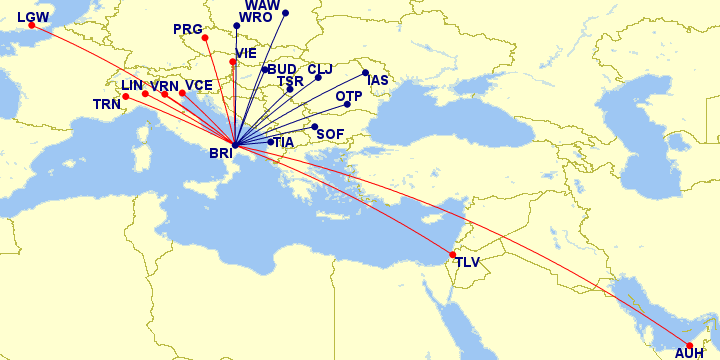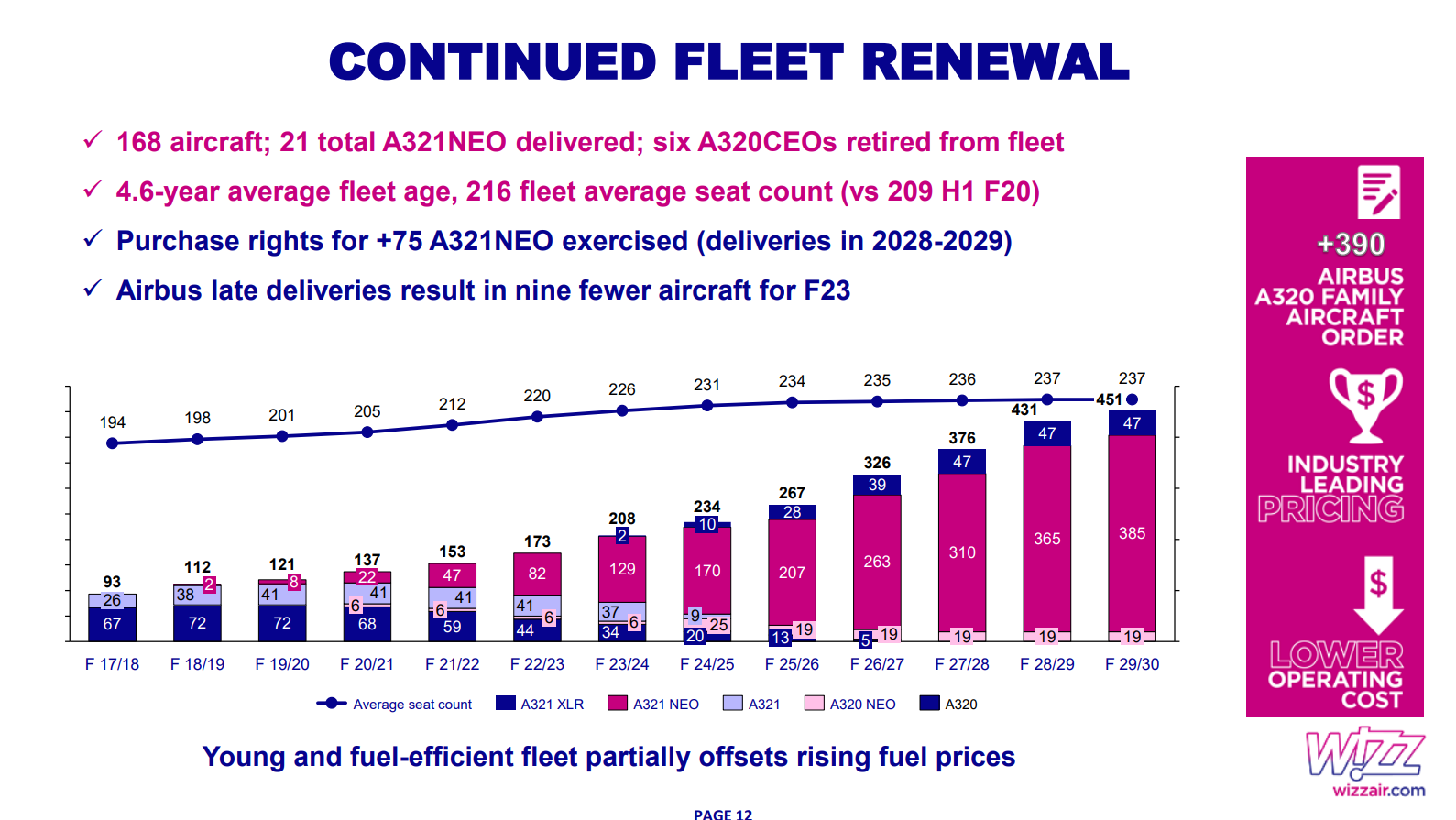Analysis: Wizz Air regroups in Italy as it slashes its base in Bari
Hungarian ultra low-cost carrier (ULCC) Wizz Air will withdraw its base in Bari, Puglia region, effective February 16. The operational base, from where aircraft and crew leave and return every day, was the airline’s third in Italy, with two of its airplanes stationed in the airport.
The move was confirmed by Wizz Air in a press release, where it confirmed the two Airbus A320 aircraft will be transferred to their largest bases in the country, of Milan/Malpensa and Rome/Fiumicino.
According to research by Italian aviation blog ItaliaVola through the airline’s booking engine, Bari will remain connected to Wizz Air’s stronghold Eastern European markets, with all domestic flights and the flights to Western Europe seeing the cut. Routes to the Middle East which originated from the airport will, too, be discontinued.

However, the closing of the base does not completely overlap with the expansion in the other airports up north, as the airline said the flights with the new aircraft will be started from July only; moreover, Wizz says the redeployed aircraft will be A321neo. The two aircraft that are based in Bari are A320, which are considerably smaller.
Diarmuid Ó Conghaile, managing director of Wizz Air Malta (the group’s AOC that runs the Italian bases) stated, in the press release, that the company «[remains] highly committed to the Italian market and [focused] on continuous expansion of our route network from Italy.»
«The allocation of three additional aircraft to Rome Fiumicino and Milan Malpensa», Ó Conghaile added, «allows us to further strengthen our offer, giving customers the opportunity to travel to four new destinations from Rome and Milan. In total, we now offer 279 routes from Italy to 38 countries in Europe and beyond».
Antonio Maria Vasile, President of Aeroporti di Puglia, the regional government-owned society that manages the airports of Bari, Brindisi, Foggia and Taranto, confirmed Wizz’s movement in a press release. «Knowing that airlines move in a free market context and of strong competition […], we acknowledge Wizz Air’s decision of reorganizing its own network in the entire Italian market».
The executive added that «in any event we are already working to reestablish, as soon as possible, adequate levels of air connectivity, in order to guarantee the best service conditions to customers».
The dire competition in the Italian market
As Vasile recognized in his press release, the market in Italy is a tough one to be profitable in — even for airlines with a very low cost base, such as Wizz Air. That is because of the very strong competition between low-cost carriers.
With a relatively strong balance sheet and its low-cost business model, Wizz took the opportunity presented by the COVID-19 pandemic to enter the Italian market. After some small steps in the UK, that was the group’s first time focusing so many assets into Western Europe.
While indeed Alitalia/ITA Airways and easyJet retreated from their Italian strongholds, the largest carrier in the national market was already Ryanair, one that tends to be particularly tough to beat.
Of the domestic routes they are dropping from Bari — and the ones they operated last Summer but did not return to — they were outnumbered in capacity by Ryanair in all but two, to Milan/Linate and Olbia, which the Irish carrier does not serve.
In any event, Wizz Air’s network movements tend to be more aggressive than other airlines. In other words, the Hungarian ULCC is fast in opening new routes, but even faster to wipe out routes that do not work. As such, the closure of the base in Bari follows the closing of their base in Palermo, Sicily, last November.
Upon the publishing of this article, Wizz Air’s Italian press office did not return our request for contact.
Gaining scale where they already are relevant
By growing their bases in Milan/Malpensa and Rome/Fiumicino, Wizz Air will get to seven and eleven aircraft, respectively, in each airport. That is actually more than Ryanair, who will have, next Summer, eight aircraft based in Malpensa and nine in Fiumicino.
While Ryanair also has major bases in nearby airports — with 22 aircraft based in Bergamo next Summer and six in Rome/Ciampino –, Wizz Air will be larger than Ryanair, by number of based aircraft, in both Malpensa and Fiumicino.
In the low-cost segment, Malpensa also has the major presence of easyJet, which counted with 24 based aircraft last Summer.
Last October in an interview with Corriere della Sera, Wizz Air’s CEO, József Váradi, said that Wizz Air intended to keep growing in Italy through 2023 «also thanks to the delivery of other airplanes, passing from 168 to 180 aircraft».
This Thursday Corriere interviewed Ryanair’s Group CEO, Michael O’Leary, as he makes his roadshow in Italy to announce their Summer 2023 program, and he commented on Wizz’s latest developments in Italy. «If we look at Rome/Fiumicino they are making longer routes, to the Middle East, Saudi Arabia, Iceland», remarked the Irish executive. «In fact, they are leaving the short routes because they cannot compete with Ryanair».
O’Leary said that Wizz is concentrating in Italy’s two largest cities — Rome and Milan.
That, for the Hungarian airline, might be their safest bet, especially as the majority of their departures to/from Fiumicino and Malpensa use the Airbus A321neo.

As we described in that analysis back in August, their A321neo, configured with 239 seats, is way larger than Ryanair’s largest airplane, the 737 MAX 8200, which has 197.
This, in theory, would allow for a smaller unit cost for Wizz Air, but at the risk of flooding the market with capacity. This smaller unit cost can be offset by lower fares, but there is still a gap to be bridged. In other words, it’s easier to fill a 189-seater than it is to fill a 239-seater.
And while we do not know the specifics — and neither Wizz’s executives answer such questions in their earnings calls — perhaps this is why, given softer bookings, the airline might prioritize larger markets, such as Milan and Rome.
At the end of the September quarter, according to their financial filings, Wizz’s «average seat count» stood at 216, while their load factors stood at the high 80s. An 85% load factor would barely be enough to fill one of their A320s.

But it’s not all doom for Wizz. Their fleet plan already forecasts their transition to the A321 (see chart above), so I wouldn’t say these movements are not top of mind by the airline management.
In essence, their fleet plan should see the Hungarian ultra low-cost carrier practically doubling in size in five years time. And as much as this market has been their cash cow, they cannot rely indefinitely on Eastern Europe. Growing elsewhere — and more specifically, into Western markets — has to be a question of time.
And as Wizz (and their brand awareness) grows into these major markets such as London, Milan and Rome, they could eventually find their way back to markets like Bari and Palermo — provided they keep their focus on cost.

/https://aviacionlinecdn.eleco.com.ar/media/2022/04/DSC_0052.jpg)
Para comentar, debés estar registradoPor favor, iniciá sesión